The Eight Unfortunate Truths of Route Development
 “Ultimately it comes down to what matters more in the end, the style of the FA or the end product?” – from this post.
“Ultimately it comes down to what matters more in the end, the style of the FA or the end product?” – from this post.
That is the question, isn’t it? I would pose a few others: Do these two factors have to be mutually exclusive? Does it have to be one or the other? Can’t we all just get along?
The problem is that the “quality” of the end product means different things to different people. Some of my favorite routes scared the crap out of me because of runouts or bad gear. Those same things that added to the overall quality of my experience would ruin it for others, because they don’t climb to have a heady experience where they could get hurt or die, they climb because they like the movement and safety of it all. Can I understand that? Of course. But is one inherently better than the other? Different strokes for different folks…
It comes down to a few cold, hard facts that we all need to face. And so without any further ado, I present the Eight Unfortunate Truths of Route Development:
- You’ll never be able to please everybody. Whatever you do will both anger and please people.
- In some areas, there’s enough rock out there for all types of styles to peacefully co-exist.
- In some areas, rock is scarce. In theory, it seems that if this is the case local majority consensus rules. In practice, though, local consensus usually just stems from local tradition. A vocal minority can stop the actions of a not-so vocal majority. Precedent is a powerful thing.
- While most climbs are on public land, I agree that there is no public mentality here in the US in terms of route ownership. I think that this is due in part because…
- Climbers generally venerate a first ascent for a number of reasons. It does take a lot of work, money, time, and vision. I think that climbers generally respect all types of bad-assery, whether it be in the form of a hard route, a long route, a beautiful route, a new route, or whatever. You’ve got to respect the actions of previous climbers because let’s face it, they got work done, props to them! It’s thanks to them that we have all these great routes to climb without expending all of that time and effort.
- It’s hard to take emotion out of climbing and look at it from a totally objective point of view.
- Climbing is an inherently selfish pursuit, we each climb for our own reasons.
- You have to draw a line somewhere. Do we really want to have bolt ladders next to every splitter crack?
So where does that leave us? Well, there’s a reason this topic has been so hotly contested since the dawn of climbing time: there’s no one-size-fits-all solution.
I think that the best argument for the “FA doesn’t own the route” stance is that most climbs are on public land. That’s a great point, but here’s a story to illustrate the impossibility of it effectively being applied in the climbing community:
I climbed a fair amount at a staunch trad area last summer. This is a crag with about 30 routes, and the tallest are about 30 feet high. There are no bolts anywhere, not even for anchors. You’ve got to make your own natural anchors, which I thought that was kind of stupid. Not wanting to put lead bolts in? Fine. Whatever floats your boat. Not putting top anchors in on 30-foot-high routes? Come on. To me that just stunk of being too cheap to pay for hardware. I voiced my opinion on an online forum and got ripped a new one. How dare I even suggest such a thing! Don’t I know that the FA obviously didn’t place anchors, and so that’s just the way it is!?! Some guy sent me an email condemning the fact that I even suggestted such a thing. He then asked me if I had any idea how much it costs to equip routes. I said yes, as a matter of fact I did, having spent about $2000 the previous year on hardware. I never heard back from him. I’ve talked to dozens of people about that area, and the vast majority wished for bolted anchors. The vocal minority said no, the FA said no. I didn’t add any anchors. Was I right? Was I wrong? Yes. Wait, no. Uh… What was the question?
The problem with the “it’s public land, I can do whatever I want because I pay my taxes, dammit” argument is that while that SHOULD (according to at least some, anyway…) be the reasoning behind creating routes for the majority, people will use the logic, “Since it’s public land, I can do whatever I want on it. I can place a million bolts, I can place none. Get off me. This is the land of the free. Please feel free to leave me alone.”
Moral of the story: For better of worse (and I would agree that it’s probably more for the worse), the FA still owns the route in America. I envy the next generation of climbers who won’t have to deal with a bunch of crusty old first ascensionists at the most popular areas because they’ll all be dead. Until then, let’s just keep doing the best we can and keep dialogues friendly and open.
This is Tristan Higbee’s first guest post for SplitterChoss.com. He knows a thing or two about route development, as he is currently working on a 20 pitch sport route in Rock Canyon in the Wasatch in Utah. Also be sure to check out his excellent site, Daily Climbing Tips.
7 Responses to The Eight Unfortunate Truths of Route Development
Bulldog Creek Dog Walk (IV WI 4+)
Hayden Carpenter and Tom Bohanon recently repeated an obscure ice climb on the south side of Mt Sopris. Given a brief mention in Jack Robert’s ice guide, Bulldog Creek Walk is described as being 100 meters of WI 4. What they found was seven pitches of ice in a remote setting that makes for one […]
Connect with Us






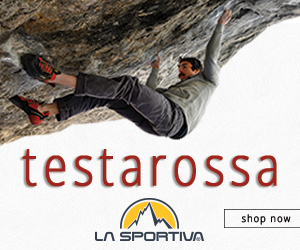

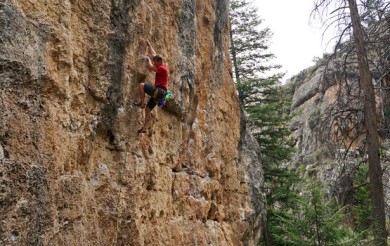
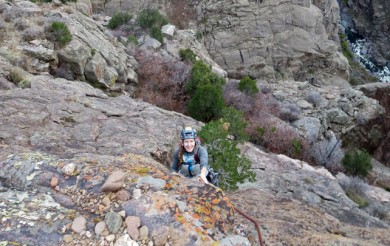
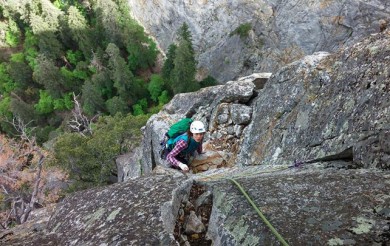
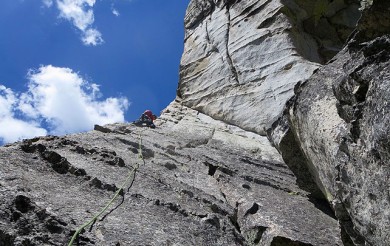



Good post, Tristan. Gets to the heart of the matter. If climbers could relinquish their egos, especially when it came to some “historical” FA collecting dust in the trophy case, consensus solutions — or at the very least, common-sense ones, as with the 30-foot crag you cite above — would more smoothly emerge. And there might then be more climbs to enjoy.
Speaking from the routes I’ve put up, I’m basically totally unbothered if someone adds an anchor or pro later, or topropes something I bouldered, or what-have-you. Their experience detracts in no way from what I experienced the day, the hour, the minute of that first ascent: and why should it? I think the main thing is that people, when FAists are still living, solicit their input first as a courtesy. Yes, the first ascentionist might launch into the typical tirade, or then again, they might be old, indifferent, and more interested in playing a little Xbox – like me.
🙂
Matt
Every FAer I’ve met has a sense of pride and ownership over their routes, sometimes accompanied by an annoying, over-inflated ego. The notion of “ownership” is an interesting aspect of new routing. On public land, routes (and the cliffs they’re on) are owned by everyone. This means I should be able to add bolts to the Bachar-Yerian, because this would make the route accessible to everyone. However, route “ownership” and the ask-the-FAers rule prevents after-the-fact route alteration, sort of an arbitrary but effective way to police ourselves.
Eventually, new routes get documented and, with enough time, are no longer considered “new”. The longer a route exists, the more resiliant it becomes to alteration. When the FAers die, the ask-the-FAers rule can’t be invoked, but hopefully route longevity will take over as precedent so that special routes like the BY can exist forever.
Wow, these might be the most thoughtful comments we’ve ever had! Obviously there is a balance, and much like Tristan, I think right now it lies a little too heavily with the FA. However, the Bachar-Yerian is a great example of a climb that I am sure the local community would never want to alter. But there are probably other run out, but less notable, routes in Tuolumne that would get a lot more use if they were just a little safer. It’s going to be interesting to see what the next ten to twenty years brings with regards to these kinds of climbs, and my guess is we will see more fixed anchor committees to deal with these kind of issues. I’ve got a post about that very issue in the works, stay tuned.
Every area has a unique character. Elbsandstein — scary knots-protected sandstone towers; Tuolumne, scary runout slabs; Verdon — super runout sport routes; Laurel Knob — waaay runout mixed bolts + gear; Rifle — crazy hard, well-protected sport routes. Let’s cherish these differences. Not every route needs to be climbable by everyone.
Pingback: News & Notes – 3/29/2010 | ClimbingNarc.com
Jim I agree with you completely. The goal of climbing is not to make every route safe so everyone can climb it. Climbing is a personal experience and if you want to seek out runout horror shows then great. If you want a bolt every three feet so you never have to climb above your gear well there are routes like that too. Thats what makes the FA ethic so important and I would say that “FA ownership” is a poor term for this. It’s not ownership, its respect for the style in which the route was put up. When you respect the FA style of a route you ensure that there will always be routes out there for every different type of climber from bold to recreational.
To an extent, I appreciate the FA sentiment and the idea of bold climbing, but what bugs me is that tradition often dictates style for a whole crag so that many areas are effectively off limits if you don’t want to risk getting maimed every time you go out. Some old schoolers do this on purpose to keep away the crowds, which doesn’t do a lot to build goodwill among the more casual climbers when it comes time to raise money to save a crag (like Laurel Knob). Am I funding your ego trip or is this going to be a place for more than just the elite?
The other thing about “respect for the FA” is that a lot of routes seem to get FAs before legal access was obtained, in many cases years ago. Also, in my State (and many others I suspect) the parks system where many of the area crags exist does not allow the placement of new hardware so access for new route development is not as easy as it once was.
There is also a bias toward a certain skill level, so that bolt ladders start cropping up when the climbing gets hard enough that the FA’er might actually run the risk of falling, which I find annoying. In some cases if you don’t climb 11 you can’t safely work a route, you just have to climb at a “must not fall” level and hope you don’t get in over your head, esp on slab where bail options are pretty slim.
Still, that said, there are a lot of routes for all levels around my area so maybe I’m just irritated with certain routes that seem like sort of stupid examples of maintaining the ethic (Yardarm at Stone Mtn for example). I don’t want to see bolts everywhere but it would be nice if routes were equipped a bit more based on the chance for injury and with a sane distance between pro rather than “whoever climbs this next is going to crap their pants…”